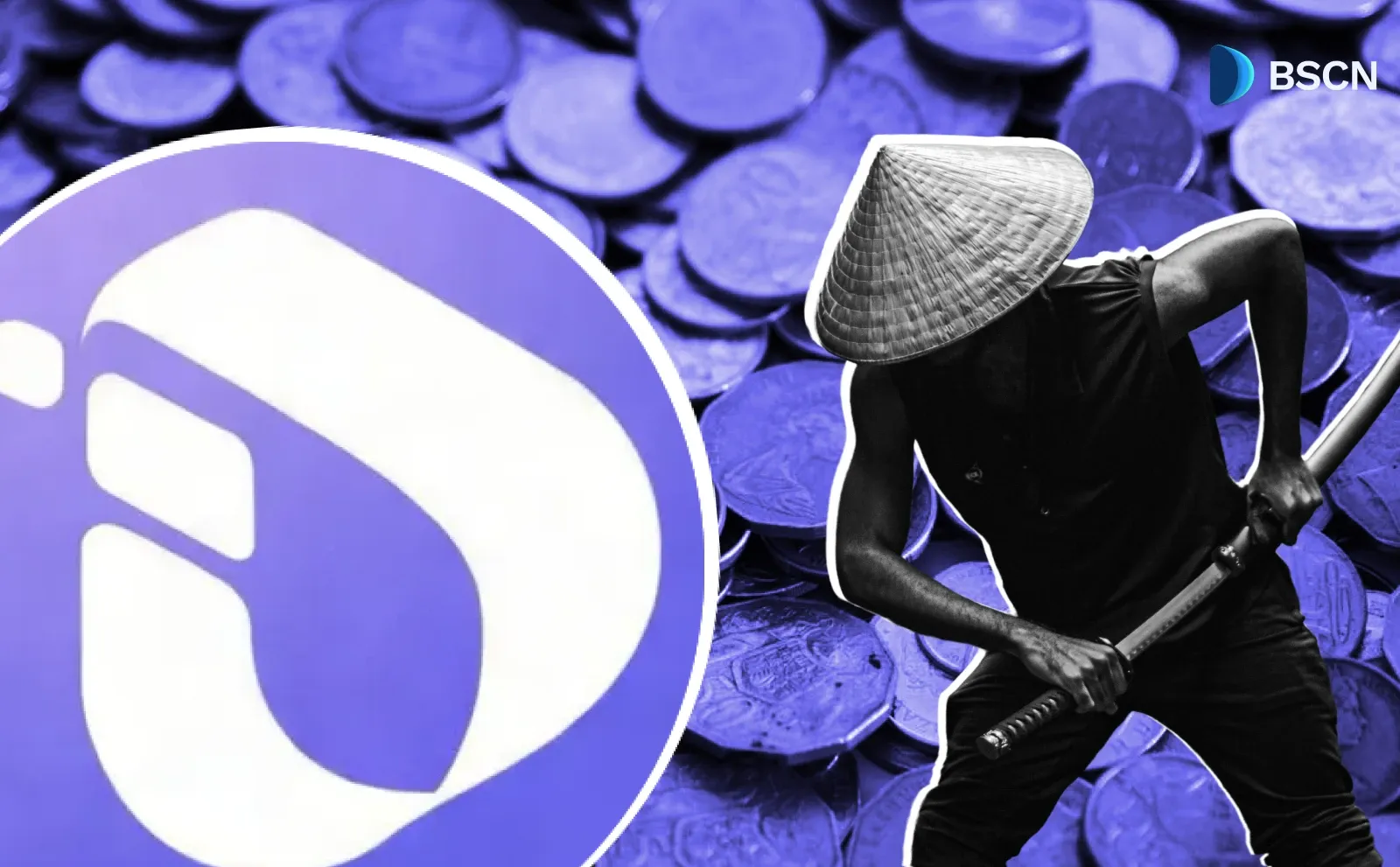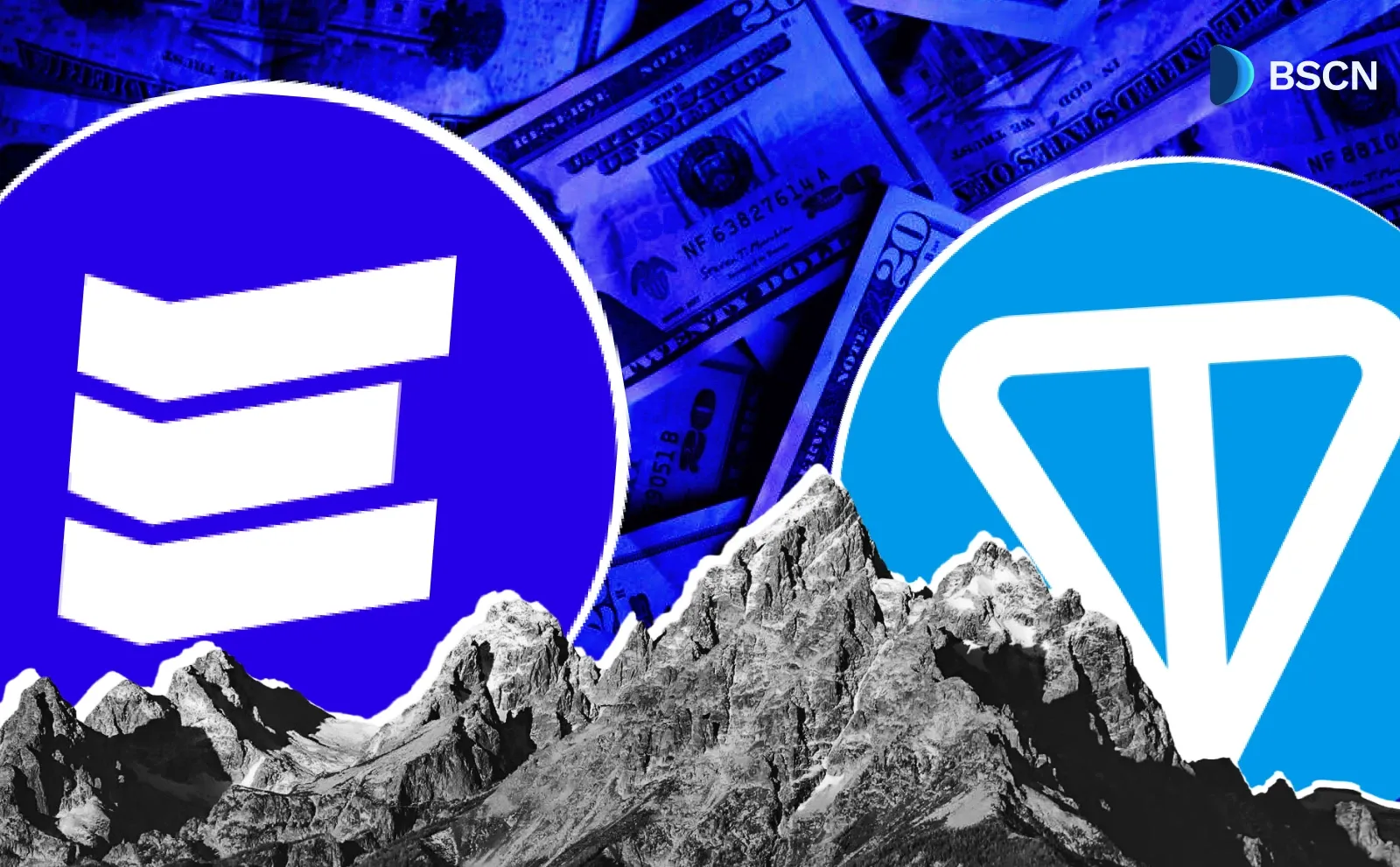Deepdive
(Advertisement)
What Is Arbitrage Trading in Crypto?

Arbitrage trading exploits price differences across exchanges to generate profits. Learn how automated bots, DeFi strategies, and cross-chain methods work.
Crypto Rich
February 6, 2023
(Advertisement)
Table of Contents
Last revision: October 20, 2025
Arbitrage trading in cryptocurrency involves buying a digital asset on one exchange or platform where the price is lower and selling it on another where the price is higher, profiting from the price difference. Crypto markets create this opportunity through fragmentation—hundreds of exchanges operate independently with their own order books and liquidity pools, creating temporary price gaps that traders can exploit.
The opportunity remains real in. Profit margins have compressed from the early days when Bitcoin could trade with price differences exceeding 5%. Current arbitrage opportunities range from 0.1% to 3% between exchanges. For traders with the right tools and capital, these small margins add up through repeated execution.
How Does Crypto Arbitrage Work?
Successful arbitrage trading requires three elements: real-time price monitoring across multiple platforms, sufficient capital to execute trades, and the speed to capture opportunities before they disappear.
The Basic Mechanism
When Bitcoin trades at $100,000 on Exchange A and $100,500 on Exchange B, a trader buys on the first platform and sells on the second, capturing the $500 difference. The challenge lies in execution speed—price gaps last only seconds or minutes before market forces eliminate them.
Why Price Differences Exist
Several market forces create these price discrepancies. Geographic differences in supply and demand drive regional pricing variations. Each exchange has different liquidity levels, affecting how quickly large orders fill without moving prices. Network congestion can temporarily delay blockchain transactions, isolating certain exchanges from broader market movements. Regulatory restrictions in specific jurisdictions limit access to particular platforms, creating localized pricing dynamics.
Market Efficiency Research
Research shows how concentrated arbitrage opportunities can be. Nearly 80% of arbitrage opportunities between 2017 and 2020 concentrated on a single exchange where Bitcoin traded at sustained premiums. Removing that exchange from analysis cut the median opportunity lifetime from 11 minutes to 4 minutes, demonstrating how specific platform characteristics drive arbitrage potential.
Markets have become more efficient. Research examining high-frequency data from Binance identified 4,879 possible triangular arbitrage opportunities, but transaction costs and limited order book depth eliminated profitability for nearly all of them. This shows how efficient centralized crypto markets have become, despite appearing to offer numerous arbitrage opportunities.
What Are the Different Types of Arbitrage Strategies?
Arbitrage approaches have evolved as markets matured, with traders developing specialized strategies based on their capital, technical skills, and risk tolerance.
Cross-Exchange Arbitrage
This strategy involves buying an asset on one exchange at a lower price while simultaneously selling it on another at a higher price.
Traders must maintain balances on multiple platforms to avoid transfer delays. Moving Bitcoin or Ethereum between exchanges takes 10 to 60 minutes depending on network congestion, during which prices can shift unfavorably. Most traders keep funds distributed across several exchanges. This approach ties up significant capital and exposes those funds to platform-specific risks.
Fee structures determine viability. Exchange trading fees range from 0.05% to 0.25% per transaction. Withdrawal fees add another 0.1% to 0.5%. Blockchain network fees during peak congestion can reach $50 or more on Ethereum. These costs directly reduce the net profit from any price differential.
Triangular Arbitrage
Triangular arbitrage exploits pricing inefficiencies between three trading pairs on a single exchange. A trader might convert Bitcoin to Ethereum, then Ethereum to Tether, and finally Tether back to Bitcoin—ending with more Bitcoin than they started with if pricing misalignments exist across these pairs.
This approach eliminates blockchain transfer delays since all trades occur on one platform. Opportunities are smaller and disappear rapidly as automated systems constantly scan for these patterns. Profitable execution requires algorithms that can identify and complete the three-leg cycle in milliseconds.
Competition is intense. According to trading data, arbitrage bots account for 86% of volume in certain crypto trading activities, with professional operations using low-latency infrastructure to capture opportunities before manual traders can react.
Statistical Arbitrage
Statistical arbitrage uses mathematical models and historical correlation data to identify assets temporarily mispriced relative to their typical price relationships. This approach carries more risk than pure arbitrage because it relies on predictions about future price movements rather than exploiting existing price gaps.
Here's how it works. Traders might identify two cryptocurrencies that historically move together but have temporarily diverged. They would short the overperforming asset and go long on the underperforming one, expecting the relationship to normalize. The strategy requires substantial data analysis infrastructure and accepts the risk that correlations may not return to historical patterns.
DeFi Arbitrage and MEV Strategies
Decentralized finance arbitrage operates across decentralized exchanges and automated market makers rather than traditional centralized platforms. These protocols use algorithmic pricing formulas instead of order books, creating unique arbitrage opportunities.
Flash Loans
Flash loans changed the game. These uncollateralized loans must be borrowed and repaid within a single blockchain transaction, allowing traders to access large amounts of capital without upfront collateral. A trader can borrow funds, execute arbitrage across multiple decentralized exchanges, repay the loan with fees, and pocket the difference—all atomically in one transaction.
The margins can be razor-thin. Flash loan data shows one transaction using a $200 million flash loan generated only $3.24 in net profit after all costs, demonstrating that even massive capital deployment can yield minimal returns when margins are tight.
Maximum Extractable Value (MEV)
Maximum extractable value adds another dimension to DeFi arbitrage. MEV refers to profit extracted by strategically ordering, including, or excluding transactions within a block. Professional MEV bots now consume approximately 40% of Solana's blockspace. Since August 2023, they have earned over $2.1 million in total profits through 21,800 transactions on certain platforms.
The competition is brutal. Individual arbitrageurs experience frontrunning rates of 85% to 95% without direct validator access. Gas price wars routinely see bots bidding 200% to 500% above base rates for profitable execution priority.
What Tools Do Arbitrage Traders Use?
Automation has become mandatory for arbitrage trading success. Human traders cannot match the speed required to identify and execute profitable trades before opportunities disappear.
Automated Trading Systems
Arbitrage bots handle the core trading operations that make modern arbitrage possible:
- Scan order books across multiple exchanges in real time
- Calculate net profits after accounting for all fees and costs
- Execute trades automatically when opportunities meet profitability thresholds
These systems connect to exchanges through application programming interfaces that enable programmatic trading without manual order placement.
Infrastructure Requirements
Professional operations invest heavily in infrastructure. High-frequency trading systems with low-latency connections to exchange servers provide milliseconds of advantage—often the difference between capturing an opportunity and missing it. Geographic proximity to exchange data centers reduces network latency, giving physically closer operations a technical edge.
Risk Management Technology
Advanced risk management systems continuously monitor exposure across multiple positions. They automatically halt trading if losses exceed predetermined thresholds. During a flash crash in March 2025, one arbitrage system detected unusually high volatility and automatically reduced position sizes while increasing the profit threshold required for execution, preventing substantial losses.
Modern systems increasingly incorporate artificial intelligence for opportunity detection and execution optimization. These systems analyze order book health and historical fill data to predict slippage before execution, sizing trades appropriately based on actual expected profit rather than theoretical spreads.
What Are the Risks and Limitations?
Despite being considered lower risk than directional trading, arbitrage carries several challenges that can eliminate profits or generate losses.
Transaction Fees and Network Costs
Every arbitrage trade involves multiple fees that directly reduce profit margins. Trading commissions on both buy and sell sides range from 0.05% to 0.25% per transaction. Blockchain network fees for transfers vary by network—Ethereum transactions during congestion can cost $50 or more, while other networks charge less but still add measurable costs. Withdrawal fees when moving funds between exchanges add another 0.1% to 0.5%.
These costs stack quickly. A 1% price difference might seem attractive. After accounting for 0.1% trading fees on each side, 0.2% withdrawal fees, and network transfer costs, the actual profit margin might shrink to 0.3%—barely covering the capital risk and execution uncertainty involved.
Execution Risk and Slippage
Slippage occurs when actual execution prices differ from expected prices due to market movements or insufficient liquidity. Large orders can move markets, especially on exchanges with lower trading volumes. An arbitrage opportunity identified at one price might execute at a less favorable price, reducing or eliminating expected profits.
Common execution challenges include:
- Slippage from insufficient liquidity reduces expected profits
- Price gaps close during order placement and confirmation
- Market movements during fund transfers eliminate opportunities
Research analyzing liquidity dynamics found that apparent 2.1% arbitrage opportunities often resulted in actual execution closer to 0.8% due to thin order book depth. Sophisticated systems predict and account for slippage before committing capital.
Regulatory Considerations
Different jurisdictions impose varying regulations on cryptocurrency trading. Some countries restrict access to certain exchanges or impose capital controls that complicate moving funds across borders. Tax treatment varies significantly—some jurisdictions tax each trade as a separate taxable event, while others recognize arbitrage with different treatment.
Regulatory developments continue evolving. The United States implemented expanded SEC oversight frameworks in 2024-2025 that increased compliance costs for exchanges, leading to higher fees that impact arbitrage profitability. Other jurisdictions maintain more favorable environments, creating regulatory arbitrage considerations alongside price arbitrage opportunities.
Technical Failures and Security
Arbitrage depends on technical infrastructure that can fail. Exchange APIs might go offline during high-traffic periods. Network congestion can delay transactions unpredictably. Smart contracts might contain vulnerabilities. Historical data shows multiple high-profile DeFi exploits where flash loan mechanisms were used to attack protocol vulnerabilities, resulting in losses exceeding $130 million in single incidents.
Professional operations maintain redundant systems, conduct thorough smart contract audits using tools like Slither and MythX, and implement circuit breakers that pause operations under abnormal conditions to protect against catastrophic failures.
Competitive Pressure
The arbitrage landscape has intensified substantially. Large trading firms with significant capital and advanced technology capture opportunities faster than individual traders. This competition has compressed profit margins and raised the bar for successful participation.
The data tells the story. About 38% of crypto traders use bots to improve trading decisions, with 66% deploying them specifically for margin trading to multiply profits. An estimated 83.3% of cryptocurrency traders using bots operate on major exchanges like Binance, Coinbase Pro, KuCoin, and BitMEX. Some 94% manage cryptocurrency valued between $5,000 and $100,000.

Is Arbitrage Trading Still Profitable?
Arbitrage opportunities continue to exist in cryptocurrency markets, but the landscape has transformed substantially from earlier periods when price differences exceeding 5% were common. Today's opportunities require more sophisticated approaches for consistent profitability.
Key Profitability Factors
Several interconnected factors determine success. Available capital determines whether small percentage margins generate meaningful absolute returns. High-quality technical infrastructure reduces latency and improves execution rates. Negotiated fee structures with exchanges—often volume-based discounts—directly impact whether trades remain profitable after costs. Execution speed relative to competitors determines what percentage of identified opportunities actually convert to completed trades.
DeFi vs Traditional Strategies
DeFi arbitrage and MEV extraction have emerged as potentially more profitable than traditional cross-exchange strategies for technically skilled participants. Flash loans democratize access to capital, allowing developers with programming expertise to compete without massive initial investment. These approaches require deep understanding of smart contract mechanics, blockchain architecture, and protocol-specific vulnerabilities.
The profit distribution is uneven. Professional operations with direct validator relationships and specialized infrastructure hold competitive advantages over retail participants. Institutional operations average 5 to 20 ETH profit per successful block execution, reflecting both capital advantages and technological sophistication.
Successful participants treat their operations as technology businesses, continuously improving algorithms and infrastructure to maintain competitive positioning.
What Should Traders Consider Before Starting?
Anyone considering arbitrage should understand the technical requirements, capital needs, and realistic profit expectations before committing resources.
Capital and Technical Requirements
Starting capital varies significantly depending on which strategy you pursue:
- Cross-exchange arbitrage: Several thousand dollars minimum to maintain balances across multiple platforms.
- DeFi flash loan arbitrage: Lower upfront capital but requires strong programming skills.
- Statistical arbitrage: Substantial capital needed for data analysis infrastructure.
Technical skills have become increasingly important. Setting up and maintaining arbitrage bots requires programming knowledge, understanding of API integration, and troubleshooting capabilities. DeFi arbitrage demands solid command of smart contract development, blockchain architecture fundamentals, and security best practices to avoid exploits.
Fee structures significantly impact profitability. Many exchanges offer volume-based fee discounts—high-frequency traders pay substantially lower rates than retail users. Negotiating better fee structures becomes critical for operations executing hundreds or thousands of trades monthly. Without preferential fee treatment, many apparent opportunities fail to generate profit after accounting for all costs.
Testing and Risk Management
Risk management must be prioritized from the beginning. Even strategies marketed as low-risk can generate losses through technical failures, market volatility, or execution errors. Successful operations implement position limits, automated stop-loss mechanisms, and continuous monitoring to protect capital.
Testing strategies thoroughly before deploying capital is essential. Most exchanges and DeFi protocols offer testnets—simulation environments where traders can validate strategies without risking funds. Paper trading and small-scale testing help identify issues before scaling up operations.
Opportunities that once lasted minutes now close in seconds or milliseconds. This evolution rewards technical excellence and operational efficiency. It makes profitable arbitrage more challenging for newcomers without substantial preparation.
Arbitrage trading represents a specialized approach to cryptocurrency markets that rewards technical sophistication, operational efficiency, and realistic expectations. Opportunities continue to exist, but success requires substantial preparation, ongoing learning, and understanding that consistent profits demand significant effort relative to returns achieved.
Sources
Crypto Arbitrage in 2025: Strategies, Risks & Tools Explained - Comprehensive analysis of arbitrage strategies, AI integration, and market efficiency trends in cryptocurrency trading.
Crypto Arbitrage Trading: Unlock Profits from Price Discrepancies - Technical guide covering automated trading systems, bot operations, and execution strategies for arbitrage opportunities.
What Is Flash Loan Arbitrage? A Guide to Profiting from DeFi Exploits - Detailed examination of flash loan mechanics, MEV competition, and DeFi arbitrage implementation.
Staff Discussion Paper on Flash Loans - Bank of Canada research analyzing flash loan use cases, arbitrage operations, and market dynamics in decentralized finance.
Bitcoin Arbitrage: The Role of a Single Exchange - Academic study examining arbitrage opportunities across major exchanges using tick-level data from 2017-2020.
Triangular Arbitrage in Cryptocurrency Markets - Peer-reviewed research on exploitability of triangular arbitrage opportunities and market efficiency on Binance.
Crypto Arbitrage in 2025: What's Changing? - Market analysis covering automation trends, regulatory impacts, and evolving arbitrage strategies.
Read Next...
Frequently Asked Questions
How much capital do I need to start arbitrage trading?
Cross-exchange arbitrage requires several thousand dollars to maintain balances on multiple platforms. DeFi flash loan arbitrage can start with less capital but demands programming expertise. Most bot traders manage between $5,000 and $100,000 in cryptocurrency.
Can I do arbitrage trading manually without bots?
Manual arbitrage is extremely difficult because automated systems execute trades in milliseconds. Arbitrage bots account for 86% of volume in certain crypto trading activities, and opportunities disappear within seconds.
Is arbitrage trading legal?
Arbitrage is generally legal in most jurisdictions as it exploits market inefficiencies rather than manipulating prices. Traders must comply with local cryptocurrency regulations, report income properly for taxes, and use compliant exchanges.
Disclaimer
Disclaimer: The views expressed in this article do not necessarily represent the views of BSCN. The information provided in this article is for educational and entertainment purposes only and should not be construed as investment advice, or advice of any kind. BSCN assumes no responsibility for any investment decisions made based on the information provided in this article. If you believe that the article should be amended, please reach out to the BSCN team by emailing [email protected].
Author
 Crypto Rich
Crypto RichRich has been researching cryptocurrency and blockchain technology for eight years and has served as a senior analyst at BSCN since its founding in 2020. He focuses on fundamental analysis of early-stage crypto projects and tokens and has published in-depth research reports on over 200 emerging protocols. Rich also writes about broader technology and scientific trends and maintains active involvement in the crypto community through X/Twitter Spaces, and leading industry events.
(Advertisement)
Latest News
(Advertisement)
Crypto Project & Token Reviews
Project & Token Reviews
Comprehensive reviews of crypto's most interesting projects and assets
Learn about the hottest projects & tokens

















